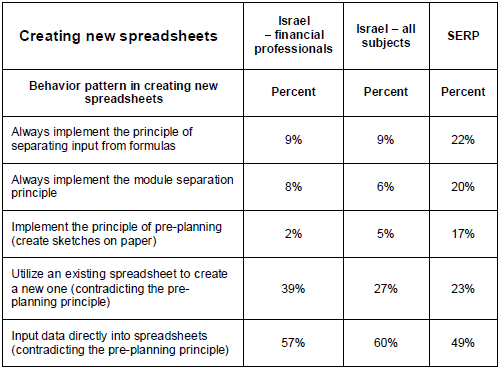Authors
Nir Gabbay
Abstract
Spreadsheets are used in almost all businesses. Their use ranges from simple applications to the development of large and complex applications critical to the organization.
Errors in data, formulas or the manipulation of spreadsheets can be costly and even devastating. However, relatively little is known about what types of errors actually occur, how they are created, how they can be detected and how they can be avoided or minimized.
Studies have found a very high incidence of spreadsheet errors, with approximately 1% to 5% of all formulas in spreadsheets containing errors. Thus, it may be assumed that large spreadsheets will contain numerous errors and even relatively small spreadsheets will have a high probability of error.
Despite such evidence, organizations and users appear to be in denial and do not take even basic actions to detect errors.
Sample

This data shows that not even the most basic principles of new file development were implemented according to the recommended practice. Most people tend to enter data directly into the spreadsheet with no prior planning and in many cases they are not strict about behavior such as separating input from formulas.
Publication
2012, 6th Israel Association for Information Systems (ILAIS) Conference, July
